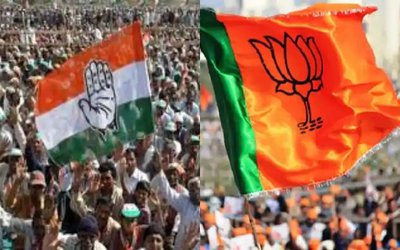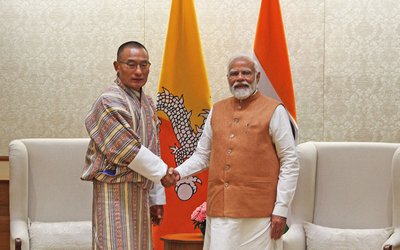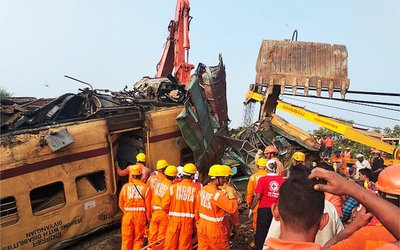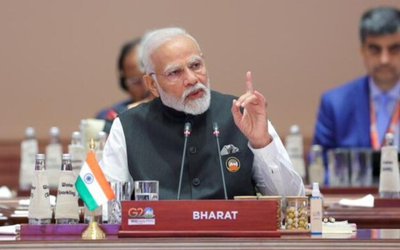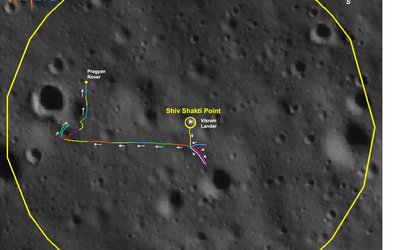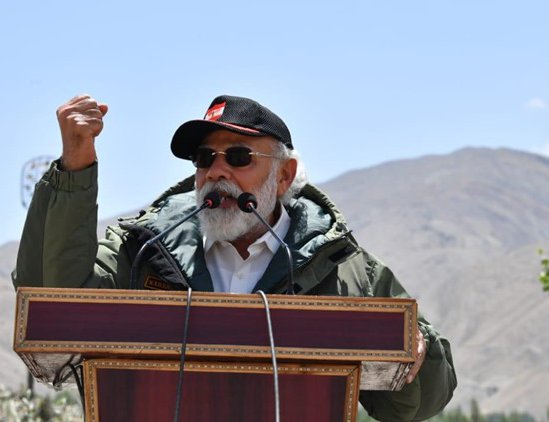
Addressing Army, Air Force and ITBP personnel during his surprise visit to Ladakh, PM Modi said the bravery shown by the soldiers has sent a message about the strength of India.
Launching a veiled swipe at China weeks after the violent showdown in the Galwan Valley of Ladakh, in which 20 Indian soldiers were killed, Prime Minister Narendra Modi Friday stated that “era of expansionism” has ended and that it is time for development.
“The era of expansionism has come to an end. This is the era of development… History has proved that expansionist forces have either lost or were forced to turn back,” PM Modi said while addressing Army, Air Force and ITBP personnel during his unannounced visit to Ladakh.
The Prime Minister said the bravery shown by the soldiers has sent a message about the strength of India. He told the personnel that their will power is as strong and firm as the Himalayas and the whole country is proud of them. “Your courage is higher than the heights where you are serving today. When the safety of the country is in your hands, then there is a belief. Not only me, but the entire nation believes in you. We all are proud of you,” he said.
Paying his homage to the fallen soldiers in the Galwan Valley, PM Modi said India’s resolve for ‘atmanirbhar Bharat’ (self-reliant India) has become stronger because of “you and your strong resolve”. He assured that the government is putting an adequate focus on the requirement of armed forces. The Prime Minister also insisted that India is committed to peace and friendship but added that this commitment to peace should not be seen as India’s weakness.
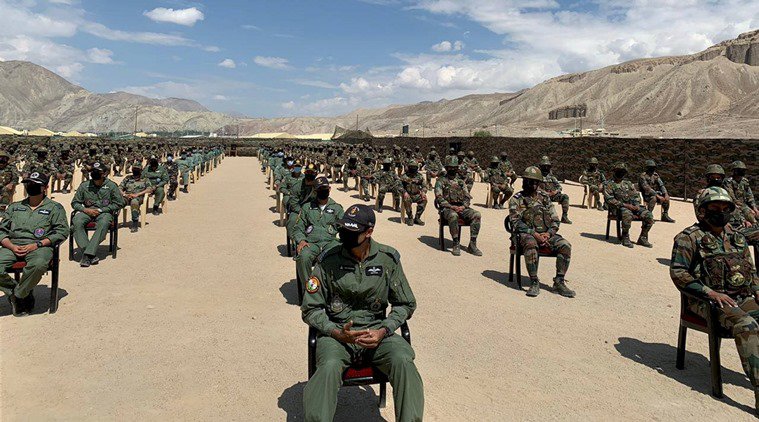
Prime Minister Narendra Modi interacts with soldiers who were injured in the Galwan Valley clash.
The Prime Minister, accompanied by Chief of Defence Staff General Bipin Rawat and Army Chief General MM Naravane, arrived at Nimu earlier this morning and interacted with Army, Air Force and ITBP personnel. This was the first high profile visit from the executive leadership to the region ever since the border standoff erupted in early May. The trip hadn’t been announced in advance. Defence Minister Rajnath Singh was scheduled to visit Ladakh today, along with Army Chief Naravane, but that had been deferred to next week.
Later, PM Modi interacted with the injured soldiers from the Galwan clash and told them that “your bravery will be a source of inspiration for times to come”.
In the worst flare-up on the Line of Actual Control in more than five decades, 20 Indian Army personnel, including the commanding officer of 16 Bihar Regiment, were killed on June 15 in violent clashes with Chinese troops in the Galwan valley where disengagement of troops on either side was underway. Beijing has acknowledged that there were Chinese “casualties” too in the Galwan Valley. While India released the names of its personnel who fell fighting, China remained silent.
This was the first time in the last 45 years that Indian or Chinese troops have been killed on the LAC.
Decoding LAC Conflict
As of now, three rounds of Corps Commander-level talks have taken place between XIV Corps Commander Lt General Harinder Singh and South Xinjiang Military Region Commander Major General Liu Lin on ways to reduce tensions along the LAC in Ladakh. Army sources, however, indicated that more meetings and talks will be needed, both at the military and diplomatic levels, to break the impasse.
While the first two meetings on June 6 and June 22 were held at Moldo on the Chinese side of the LAC, the third one was held at the Chushul border point on the Indian side.
Indian and Chinese troops are involved in a face-off at multiple locations in the region. The friction points include North bank of Pangong Tso, Hot Springs, Vohra Post, and Galwan Valley.
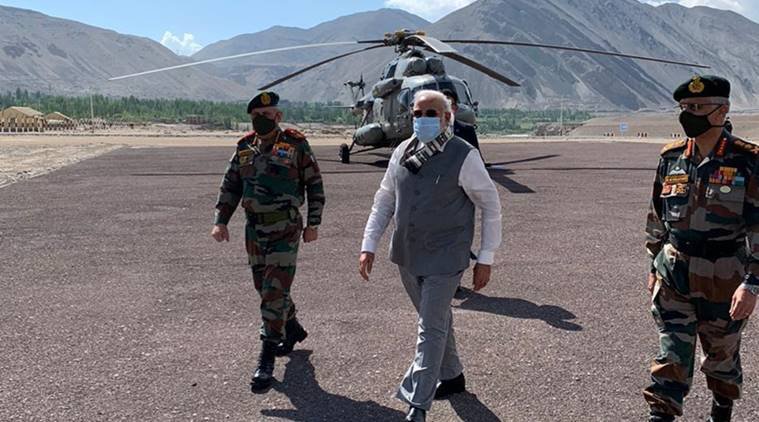
A security official told The Indian Express that during the meeting the Chinese side stonewalled all discussions on the Pangong Tso area where they have moved eight kilometres west on to the Indian side of the LAC, and are in a faceoff with Indian soldiers between Finger 4 and Finger 3.
There was also no substantive discussion on the Depsang area, where Indian patrols are no longer being allowed to reach PP10, PP11, PP11A, PP12 and PP13 – on the arc formed by Raki and Jivan nalas – by Chinese troops at a place called Bottleneck.
Both Pangong Tso and Depsang are two ‘areas of friction’ where both sides do not agree on the location of the LAC and have had differences in the past. The two sides had agreed on a phased and stepwise disengagement at other areas of friction, in Galwan and Hot Springs, which was reiterated during the meeting, the official said.
The official said they expect this to be a “long haul” and there is fear it could eventually lead to a “hardened all-season LAC”.
Source: The Indian Express
- Nepal-China Aid Project Meeting Held In Lhasa
- Apr 25, 2024
- Ambassador Subedi Presented The Letter Of Credence To President Of Italy
- Apr 25, 2024
- Nepal-Qatar Joint Business Council Formed
- Apr 25, 2024
- Weather Forecast: Isolated Brief Rain Is Likely To Occur At Few Places Of Koshi, Sudurpaschim And Karnali
- Apr 25, 2024
- Qatar And Nepal Ink Several MoUs, Returned Home Completing Two Days Visit
- Apr 24, 2024


